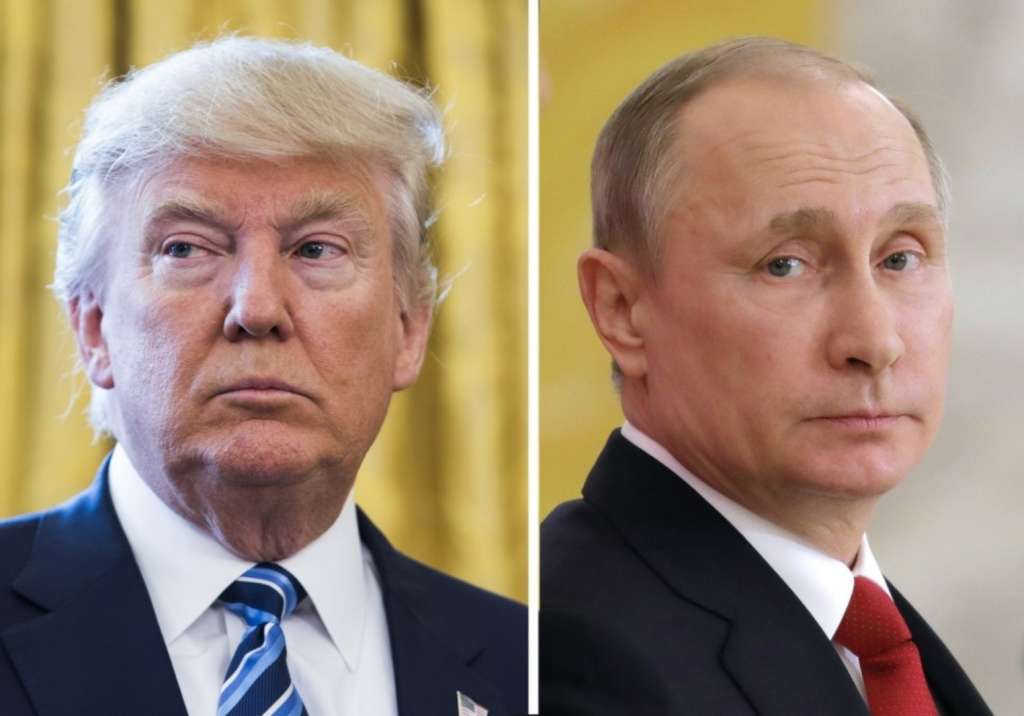Into the deadly morass of the Syrian war, Russian President Vladimir Putin has dropped a new peace proposal that calls for establishing safe zones in several parts of the country, grounding the Syria air force and possibly creating buffer zones between combatants to be monitored by international peacekeeping troops.
Putin outlined his plan in a telephone call Tuesday with President Trump, according to a diplomatic source. Putin requested the call and dominated the conversation. The White House has said little publicly about the details, but has agreed to send a State Department official to peace talks taking place in Astana, Kazakhstan.
Putin’s proposal may be an effort to fill the vacuum of any clear Trump administration diplomatic strategy for Syria. Much as Chinese President Xi Jinping made himself Trump’s partner for dealing with North Korea, Putin may be attempting a similar play for Syria. The benefits for Moscow would be reducing its diplomatic isolation and improving its image after getting caught red-handed interfering in last year’s US presidential election.
According to the diplomatic source, Putin outlined for Trump a plan for “deconfliction zones” in four areas: Idlib province in northern Syria; a zone north of Homs in central Syria; an area east of Damascus known as Eastern Ghouta; and the southern region that borders Jordan. The plan calls for physical separation of combatants in these areas and allows the possibility of buffer zones that would be staffed by UN peacekeeping troops or another international monitoring force.
A sweetener for the rebels in the Russian proposal is that the Syrian air force would be grounded while the de-escalation process is underway. Rebels argue that Syrian bombing has caused the war’s worst atrocities, including the chemical weapons attack on a town in Idlib last month.
The Russian leader also shared his proposal Tuesday with German Chancellor Angela Merkel and Wednesday with Turkish President Recep Tayyip Erdogan. Putin has been trying for months to draw Erdogan into closer cooperation on Syria.
The Trump administration has been slow to frame its own Syria strategy, opening an opportunity for Putin to shape the diplomacy. A White House statement said Tuesday: “President Trump and President Putin agreed that the suffering in Syria has gone on for far too long and that all parties must do all they can to end the violence.”
Putin’s peacemaking will face the same obstacles as past US-led efforts to reduce the violence in Syria. Head of Syrian regime Bashar al-Assad is entrenched, his Iranian allies resist compromise, and the Syrian opposition is divided, influenced by extremist groups and resists any peace deal that doesn’t promptly remove Assad.
The establishment of safe zones has been a key opposition demand for the past several years. Putin’s proposal appears to be a concession on that issue, but the devil is in the details here.
Asked to explain Putin’s new peace push, diplomats offered several explanations. The Russians were worried by Trump’s authorization of a cruise missile strike on a Syrian air base after last month’s chemical weapons attack. And they were concerned, more broadly, about the deteriorating state of US-Russian relations under a Trump administration they had hoped would bring an easing of tensions.
Putin may have been uncomfortable, too, watching China’s Xi position himself as Trump’s key partner in Asia. Putin’s move is opportunistic. But for a change, he’s the one pursuing a Syria deal, while the United States bides its time.
(The Washington Post)
